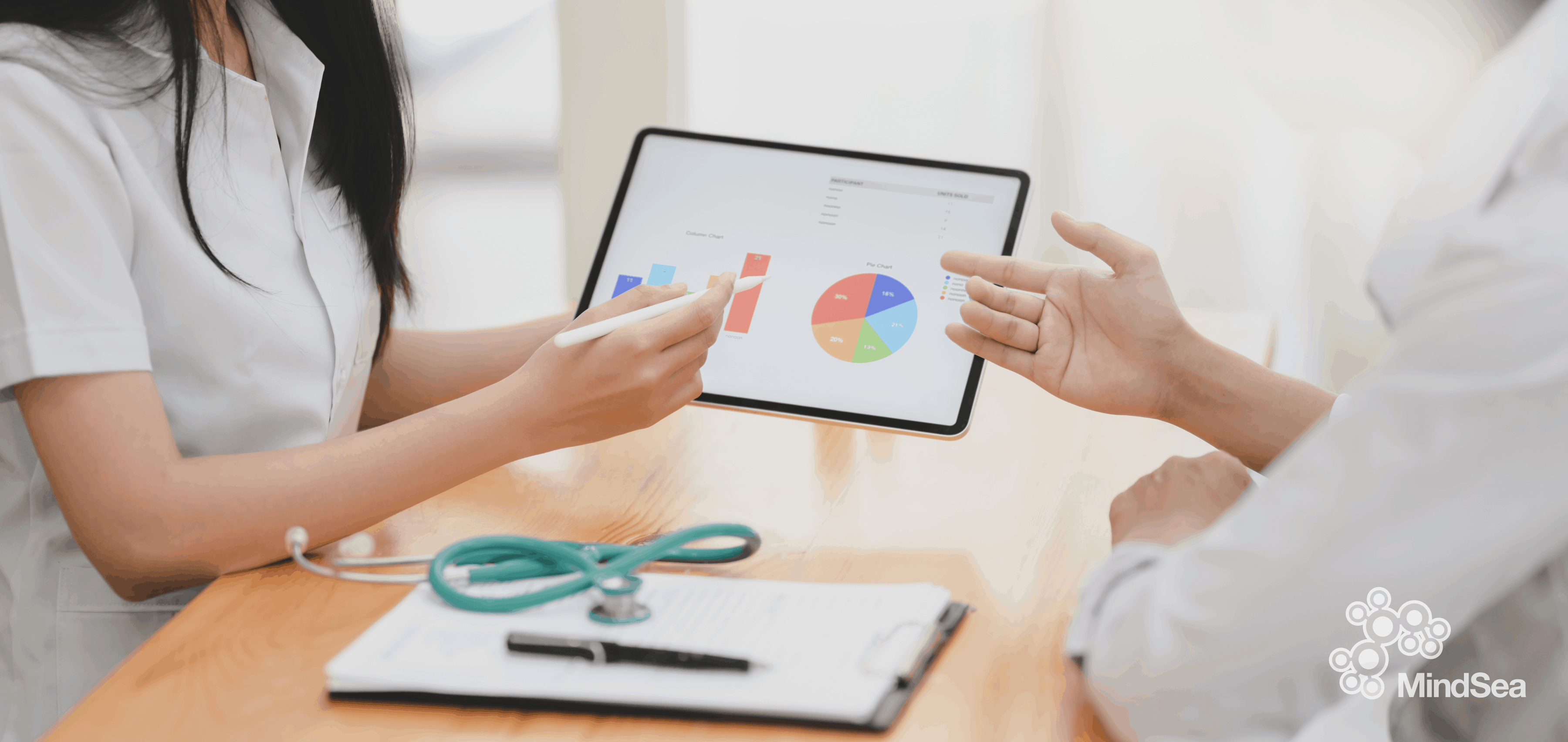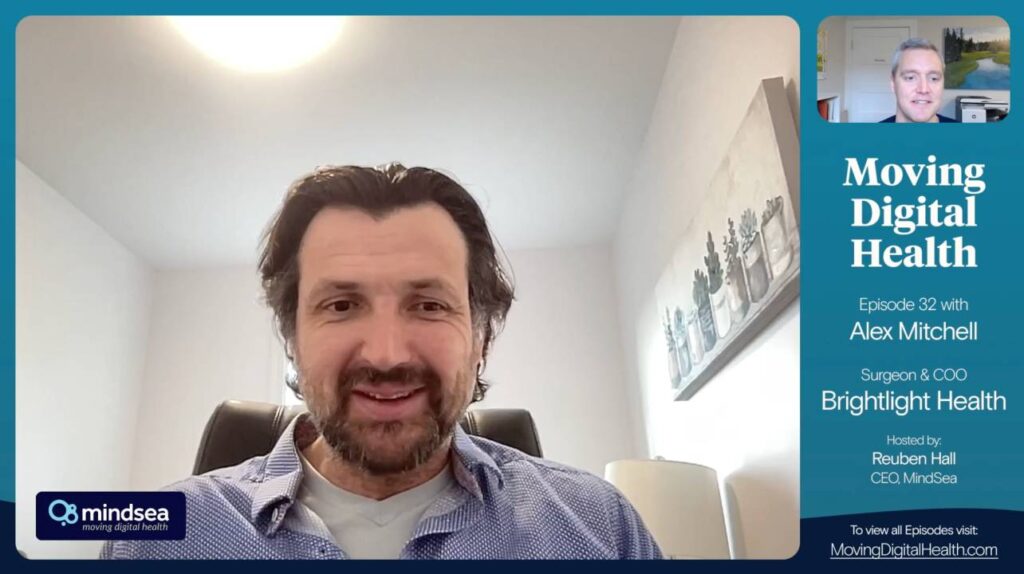The healthcare industry is trying to efficiently deliver the best possible care by engaging patients in other ways than just traditional in-person consultations.
In the U.S., for example, over half of the surveyed patients have an electronic health record (EHR), with 44% having access to it. Providers must continue to be transparent and give patients autonomy, and letting patients have access to their own health data is crucial.
With virtual care becoming increasingly prevalent, health data management, or the collection and sharing of data, is now more critical than ever. Patients can help providers with data collection by sharing their data from home. Patient-centred care puts the patient in the front seat, alongside providers, who help the patient make shared and informed decisions.
Mobile health (mHealth) applications have become an integrated part of many patients’ lives, and the data from these apps could potentially help the health sector a great deal. But to be useful for busy healthcare providers, data first needs to be organized, validated, and processed.
Health data is complex and high-dimensional. It spans from basic patient demographics, such as date of birth, to highly specialized magnetic resonance imaging (MRI) data. Managing health data is not a simple task, and this article will describe some of the considerations for anyone who wants to build a mHealth (mobile health) product.
What Is Health Data Management?

Health Data Management (HDM) is the ‘housekeeper’ in an electronic medical/health record (EMR/EHR). During this process, data is being efficiently and logically organized without redundancy, reviewed for errors, processed, retrieved, and kept safe in a secure environment.
Health data includes but is not limited to:
- Patient demographics
- Medical notes
- Laboratory test results
- Procedures and surgeries
- Imaging, like x-rays, computerized tomography (CT), and MRI
- Prescriptions
- Referrals and other communication
- Provider information, etc.
Data can be both structured and unstructured. An example of structured data is a data field for a patient’s height, using a standardized measurement and unit. Unstructured data could be a string of free text, for example. Computer systems can easily interpret and validate structured data, but unstructured data needs more human interaction or computational processing before being interpreted. Natural language processing (NLP) by computers is one method for processing unstructured text-notes.
Standards within healthcare like ICD-10, HL7, LOINC, and SNOMED, help us to communicate in the same ‘language’. A diagnosis code or laboratory result must have the same definition internationally, which is an important consideration when combining and interpreting health data from several entities.
Why Is Health Data Management Important?

To deliver better care, the healthcare provider must be well-informed about the patients and link their health data with the most recent evidence. Time is a limiting factor, and providers do not always have the resources to read the patient’s records in detail.
It is essential to improve both the quantity and quality of health data. This can be done by including more relevant variables while making sure records are complete, up-to-date, and validated for all patients. More data means more interpretation. These interpretations can become complex for healthcare providers as the dataset grows, as science continuously evolves, and as new guidelines are published and new treatments discovered.
Clinical decision support systems (CDSS) can help interpret healthcare data with the newest evidence, as well as suggest personal care plans and treatments tailored to each patient. For example, the CDSS can warn against inappropriate prescriptions or suggest a relevant care plan based on the patient’s profile.
As mentioned earlier, health data is high-dimensional with many variables that together describe a patient. Machine learning can be applied to the high-dimensional data and predict health outcomes and patterns that the human eye could have missed. These predictions can be targeted to help a specific patient group or used to describe trends and patterns on a population-level for the authorities and the general public.
To have a well-functioning CDSS component or to apply advanced technologies, the right health data management is fundamental.
What Are The Best Ways To Manage Health Data?

The sources of health data come traditionally from the patient via the provider, and the provider enters the data into a medical record system.
An electronic medical record (EMR) is the type of system that primary care providers would normally use as an electronic version of paper record-keeping. Electronic health records (EHRs) are more complete records that are implemented at hospitals and bigger health institutions. The patient can access their health data via a personal health record (PHR), where they are the custodian.
By tapping into the full potential of information from the patients, letting them contribute from home, and having direct access to their information stored in the EMR/EHR, providers can engage their patients on a new level. Pre-consultation and pre-surgery forms can be entered digitally from home in less stressful environments, and follow-up home blood pressure measurements can be registered and followed virtually by the health care provider. There are endless possibilities for mHealth apps, where home-assessed health measurements can be shared with the providers.
Patient-entered data should be validated by their healthcare provider to ensure there are no misunderstandings. Likewise, patients can validate medical information entered by their healthcare provider to decrease medical errors.
Not all data in the EMR and EHR can be directly shared with the patient, such as biopsies for suspected cancer or other life-changing and worrying test results or predictions. Policies on sensitive data need to be implemented to protect the patient from receiving critical test results alone without the emotional and clinical support from their healthcare provider.
Challenges Facing Health Data Management
Personal health information is extremely sensitive and must be protected against potential breaches and cyber threats, with high-security standards set by the local jurisdiction and law. Also, internal restrictions within the organizations is a common practice to ensure only relevant staff members have access.
Redundancy means unnecessarily repeated information. It is more difficult to manage a database when information is repeated over several locations in the database. An example of redundancy could be when the last name is changed in one table but not in another one. This would create a conflict of information and an error in the system. There is a low tolerance for errors in healthcare since they can affect patients, lead to poor healthcare outcomes, and, in worst-case scenarios, cause fatalities.
The quality of the data is only as good as what you feed into the database, as well as how well it is organized. Fragmented data, spread over several platforms, is a challenge when these platforms are communicating with each other. It is important to use international standards for storing, labelling, classifying, transferring, and retrieving the data.
As the databases with health data inevitably expand, including imaging technologies, the storage capacity needs to follow. The cost of storage hardware can be a significant factor.
What Do Mobile Health Developers Need To Know?
Tools such as mHealth apps can empower and engage patients.
On their mobile devices, patients can potentially seek advice, interact with their healthcare provider via audio, video, and text-based channels, enter home-assessed measurements, look up their health data including test results, and book new appointments. There are endless opportunities to fill in the gaps that patients may face that will elevate their experience with the healthcare sector, and hopefully improve their overall health outcomes.
It is not only patients who can benefit from using mobile apps. Healthcare providers can use their mobile devices to quickly receive test results, triage their patients, book appointments, communicate with their patients, use built-in decision support tools, and look up the newest guidelines without before they even log onto a workstation.
Local regulations around privacy and security need to be applied when handling personal health information, and relevant standards like HIPAA in the US must be incorporated to protect the patient.
In medicolegal situations, it is very important to know who wrote what and what actions were taken. An audit trail log built into the system is essential to support both the provider, patient, and application developer in legal cases.
Wrapping Up

Health data management is the central piece of electronic medical and health records. It helps the healthcare system improve care and decrease medical errors. It also enhances communication with other platforms, such as mHealth apps, where clear communication between systems is a top priority. Health data management is crucial when building an app for patients and providers.
Apps can ease data collection and retrieval, and decision support systems can advise providers with the newest guidelines.
Health care providers can potentially deliver better care with better access to their patients’ health data. Patients can contribute data outside of in-person consultations, and look up their health records to follow their care plans to stay engaged.
If you work in healthcare and want to launch an app that can change lives – Get in touch or take a closer look at our approach to bringing health apps to life.



